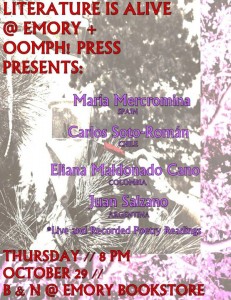Read: Frankenstein, 136-166; Part 1, Chapter 3 (“The Art of Quoting”) of They Say, I Say
Blog post (due Wednesday at 11:59 p.m.; approx. 200-300 words; please include your name and the post number [#8] in your subject line):
Look through your previous blog posts. Find one example from your posts where you quote from a primary source and one example where you quote from a secondary source. How have you integrated the quotation into your own writing? Have you introduced it? Explained what it means? Indicated how it relates to your text? For your post, revise your two examples, using the templates on pp. 46-47 for introducing and explaining quotations. (If you already created a “quotation sandwich” in your original posts, try using a different template or introducing/explaining the quote in a different way.)
Extra credit: Attend the Literature is Alive poetry reading and write a blog post (200-300 words) responding the the event.

